Foulques III d'Anjou, or Fulk Nerra ('The Black Chieftan') as he is usually called, is our local medieval bad boy. He was one of the most active warlords of his day, and a great builder. His life was a hectic cycle of destructive wars, remarkable buildings, ferocious revenge and fervent repentance.
His feats of arms and acts of villany have come down to us through several medieval chronicles. Because the contemporary historians and later story tellers interwove fact with classical myth and legend, it can be difficult to unpick the truth of his eventful life.
Reconstruction of medieval scaffolding on Fulk's ruined tower at Langeais.
At seventeen years old Fulk inherited his father's territory of Anjou in 987. His mother, Adele of Vermandois, had died when he was five. His father Geoffroy, known as Grisegonelle ('Grey Mantle') was legendary for his bravery, and died on the battle field in the service of the King of France, Hugues Capet.
Although Fulk had a tutor to teach him grammar and the other arts considered essential, he had been a squire learning the art of fighting alongside his father since he was twelve. By seventeen he was an enormous young man, a veritable giant for those times, physically big and powerful. As his father's squire he would have looked after his weapons and horse, and accompanied him on long military campaigns. He was a tough lad, hardy and strong. He would have been well schooled in using the weapons of the day too. Like many warriors of his class, his favourite weapon was the lance, which he preferred to the sword, which was too heavy and too short unless you were in close combat. By the time he was seventeen he had also learnt the subtleties of military strategy and rudimentary diplomacy.
Beaulieu-lès-Loches.
Fulk inherited not just his father's traditional lands of Anjou and the Gatinais, but also some castles in the Touraine and Poitou that had been acquired by force. In order to keep these captured domaines he had to act quickly to reinforce the numbers of defenders in each of them. Land was wealth in those days so the favourite activity of men like Fulk was to sally forth and ravage the lands of their immediate neighbours. They destroyed vineyards, stole livestock, drained millstreams, massacred serfs, burned villages and claimed ransoms for any well known prisoners. In order to hold territory it was necessary to wage unrelenting war, and Fulk at this time was described by one of the chroniclers as a 'wild beast'. The other way of expanding territory was to seek a well endowed wife. Fulk set his sights on Elisabeth, daughter of the Count of Vendome, Bouchard the Venerable.
Initially Fulk was mostly interested in grabbing land from his neighbouring Counts of Brittany and Blois. But after a few years under his belt he made the City of Tours his ultimate target. In fact, he never managed to capture Tours in his lifetime. It was left to his son Geoffroy Martel to take that prize.
The Chateau of Montrichard.
Fulk was a clever strategist and organised his army into four legions of a thousand warriors which were sent to the four corners of his territories. He was a formidable warlord. He cut the army of Blois to pieces at Amboise. His sister's husband Conan of Brittany was given the same treatment when he tried to take Angers. Two of Conan's sons (Fulk's nephews) were killed and the Count of Brittany humiliated. Conan allied himself with the Normans and tried again. It was a fatal mistake and he died on the battlefield.
The contradictory nature of Fulk started to show itself with the first of his really shocking sins. A priest who called him a vile thug was pursued, on horseback, fully armed, into a church. After the red mist cleared Fulk realised that God would have seen and his mortal soul was in danger. He went barefoot, in a hair shirt, to do penance at Saint Martin's tomb.
Outer defensive walls of the Chateau of Loches.
In order to give himself some respite from the constant campaigning he started constructing defenses. Massive fortified camps appeared, wooden towers, dungeons, fortified houses and castles, wherein he placed loyal men, in places such as Langeais and Montbazon, Montrésor and Loudun. Buildings popped up like mushrooms during the autumn construction period. They ranged from simple wooden forts on a mound of earth surrounded by a palisade, to massive fortified buildings protected by crenellated curtain walls and a deep moat. These defensive positions were no more than thirty kilometres apart ie a days march for a military squad.
The ruin of Fulk's keep at Langeais.
But in 1000 he is distracted by another issue, closer to home. His wife of twelve years, Elisabeth, had only ever given him a single daughter, Adele, as offspring. He was desperate to have a son, but then he found out that Elisabeth was having an affair, taking advantage of his long absences. When she realised that he knew she barricaded herself inside the citadel of Angers. According to the chronicles he laid seige and finally captured her. She fell (or was thrown) from a tower, but did not die from the fall -- whereupon he killed her and burned her body. The chronicle also says the pyre caused the whole city of Angers to burn but this does not seem to be true.
For this sin he sought forgiveness, and went on pilgrimage to the Holy Land in 1003, leaving his lands in the custodianship of his half-brother Maurice. It was almost a century before the first Crusade and the pilgrimage was simply to get to Jerusalem, not to fight. The journey was dangerous, through hostile territory.
Jerusalem, as depicted on a shield held by a sadly mutilated angel in the abbey church at Beaulieu.
On his return to Anjou eighteen months later he was full of new resolutions to be a better person and began the construction of several new monasteries. Amongst them was the monastery at Beaulieu les Loches, not far from his fortress at Loches. Monks were hired to pray for his soul day and night at Beaulieu. He also built a monastery in Angers which was so well endowed it began to rival Fleury and Reims as a centre of learning.
At Christmas 1005 he decided it was time to remarry and chose Hildegard of Sundgau, a descendent of Charlemagne. In time she have him four children -- three girls (Adelaide, Blanche and Hermengarde), and the longed for son (Geoffroy, born in 1006).
Fulk's keep at Loches.
A few years later he arranged the assassination of Count Palatine Hugues de Beauvais, an ally of Count Eude of Blois. Unfortunately Hugues was also a trusted and close advisor to the King, Robert II. The act was considered high treason and he was threatened with ex-communication. Fulk had little choice but to hand over control of Anjou to Maurice again, and head off to Palestine.
This pilgrimage gives us the most famous story about Fulk. When he got to Jerusalem he found the gates of the city closed to Christians. He was forced to bribe his way in, and then was told that he could not visit the Holy Sepulchre unless he pissed on the tomb. His cunning solution was to strap a pig's (or ram's, depending on which version you read) bladder filled with fine Anjou white wine between his thighs and empty that on the Tomb of Christ. Then, leaning forward to kiss the tomb, he found that his lips had softened the stone and he was able to bite a piece off. Carefully secreted in his cheek, this became the most precious relic in the care of his monastery at Beaulieu.
19th century stained glass window in the abbey church at Beaulieu,
depicting Fulk at the Holy Sepulchre.
One year later he was back in France, totally absolved of the murder of Hugues de Beauvais. His half-brother hadn't been completely successful in his absence and Fulk found he had some territory to regain. In 1016 he defeated Eudes of Blois in the Battle of Pontlevoy. This was one of the bloodiest battles of the Middle Ages, with 6000 men left dead on the field. Fulk himself was not unscathed, having been thrown from his horse. He managed fight his way out with ferocious sword blade action.
In 1025 Fulk took the citadel of Saumur from Eudes of Blois. His army broke down the gates with a battering ram, only to come face to face with kneeling monks in prayer. The town had assumed this would stop the rampaging soldiers, but the monks were swept aside like dead leaves and the soldiers ransacked the castle and set fire to the church.
Later, in keeping with his usual pattern, he was wracked with guilt over this misdeed. He couldn't risk another trip to Jerusalem, so to show his repentence he had another abbey built -- this time a female establishment, with mills, fishponds and vineyards at Ronceray, on the hillsides of Layon (beginning what is now a famous tradition of sweet white wine from this area).
In 1032 the new young King Henri I asked Fulk to sort out the rebellious town of Sens, which had objected to their newly appointed Archbishop. Fulk being Fulk, he charged in with his army and rased the place to the ground.
But a few days later strange and troubling phenomena began occuring. A new and mysterious star appeared in the night sky. A terrible storm ravaged Angers and lightning struck the cathedral roof, setting fire to it. The fire spread and soon the whole town had burnt. Fulk didn't think it was a coincidence. He thought God was telling him to go to Jerusalem one more time.
This time he left his son in charge of the Angevin territories, but Geoffroy was young, arrogant, tempestous and lacked diplomacy. He mismanaged the territory and alienated a good part of the population. When Fulk returned a year later he was forced to punish and humiliate his son before forgiving him.
By 1039 Fulk was an old man, nearly seventy. He felt the end coming and as always, frightened of going to Hell, he decided to go on one last pilgrimage. He wore a hair shirt and took a few trusted knights with him. Once in Jerusalem he had himself subjected to mortifications by being dragged around the streets and beaten with rods.
Finally, near Metz on his way home in 1040, he developed a fever and died. His was a long reign of over 50 years and he served three Kings. He left one of the most powerful feudal domains in France to be inherited by his only son Geoffroy Martel ('The Hammer'), while his wife Hildegarde retired to the nunnery at Ronceray. His flourishing abbeys contributed to the great cultural influence of the Angevin province at this time. Poverty and ignorance were reduced and new towns thrived. His skill and daring brought prosperity to Anjou. His mortal remains were buried in the abbey at Beaulieu les Loches. We don't know where his soul ended up.
************************************************
For details of our private guided tours of chateaux, gardens, wineries, markets and more please visit the Loire Valley Time Travel website. We would be delighted to design a tour for you.
We are also on Instagram, so check us out to see a regularly updated selection of our very best photos.
We are also on Instagram, so check us out to see a regularly updated selection of our very best photos.

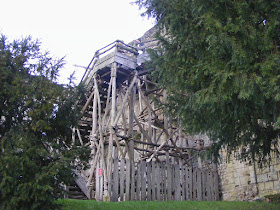
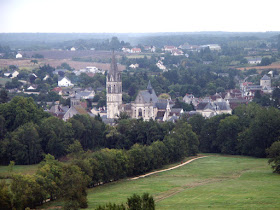
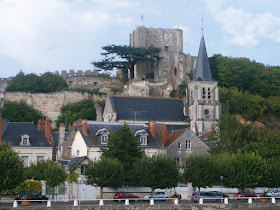
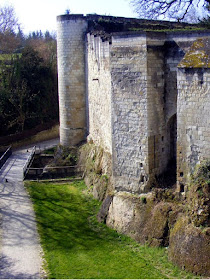

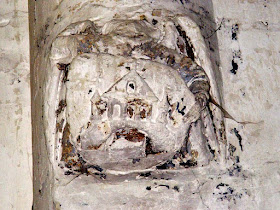
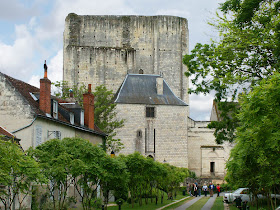

10 comments:
That was a bloody good read!
He certainly got things built and should be remembered for that!!
Very interesting and well researched post. I learned a lot from it.
I vividly remember that a few years ago Celestine took us, you, Simon, Ken and I to Beaulieu for lunch and later we visited the abbaye there. Great memory.
Was it the same day we went to the Corroirie du Liget?
I'll second Tim's comment. Thank you for posting all that for us.
Thanks.
It's remarkable how many local medieval chateaux are Fulk in origin.
I can't remember if that was the same day or not, but it would make sense. Not too far between the two.
Yes, it was the same day on July 28 2010. Ten years ago! Ken posted about our lunch at L'Estaminet and about our visit with the owner of La Corroirie later. Tempus fugit!
This is the way history should be taught! Clear interplay between personal emotions and the destinies of whole countries. Compelling storytelling. Thank you!
You're welcome.
Post a Comment